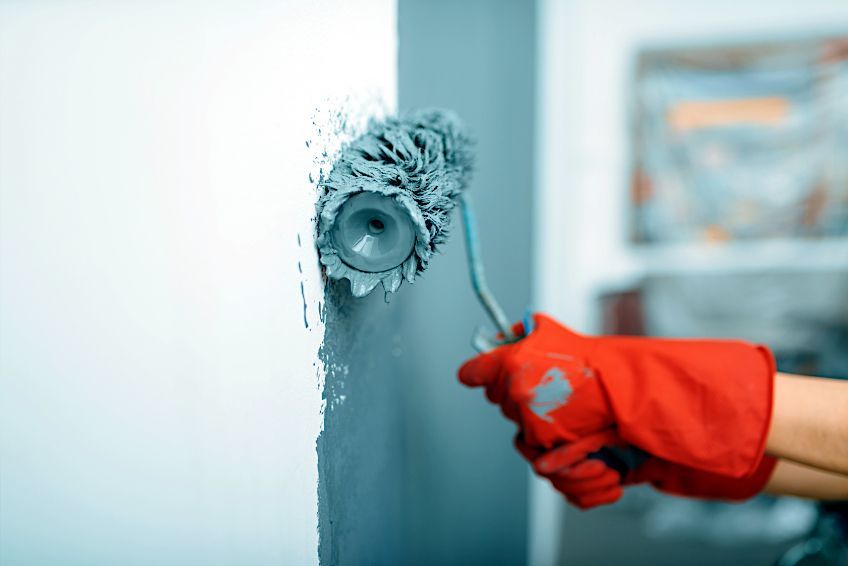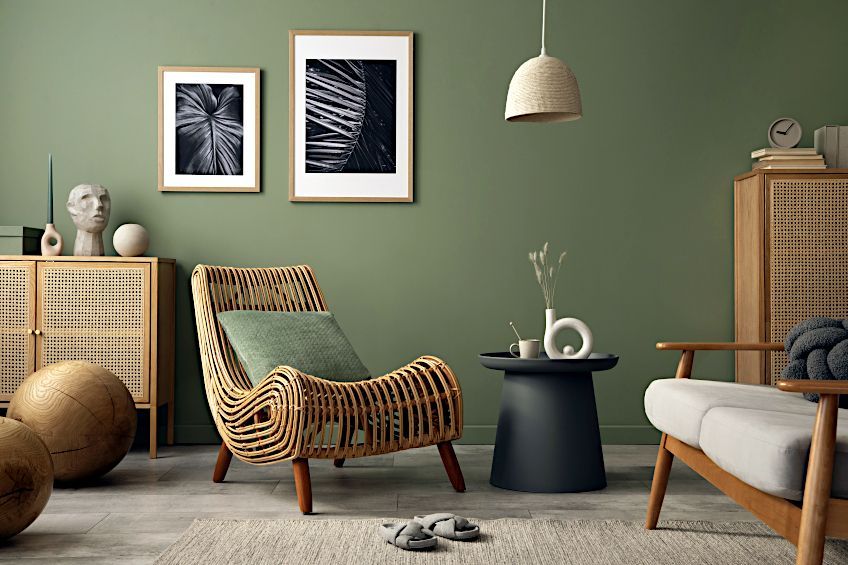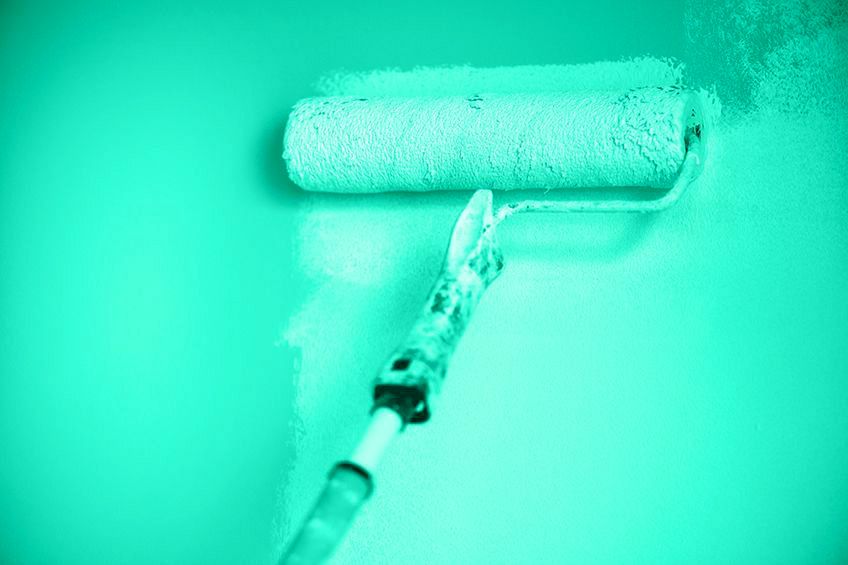Does Paint Dry Darker or Lighter? – Everything You Need to Know
This post may contain affiliate links. We may earn a small commission from purchases made through them, at no additional cost to you. You help to support resin-expert.com
Choosing paint can be a tough but fun exercise. After all, there are so many colors to choose from, and of those colors, there are different shades and tones that may or may not tickle your fancy. Whether a color fits the mood of the space you’ll be painting or works with the lighting in the room is arguably subjective, but at the very least you’d expect the paint you’ve chosen to look as advertised once it’s been applied to the wall. After all, the last thing you want is to splurge money on a color you really like only to find out that it looks completely different once it’s applied to your surface of choice. This being said, does paint dry darker or lighter once applied? Let’s have a look at this question and what factors can influence the tone of a paint color once it’s applied to a surface.
Does Paint Dry Darker or Lighter When Applied to a Surface?
Let’s start off with a rule of thumb that you should follow when wondering whether a paint will look the same once it’s been applied to your workpiece. As with anything that is advertised, paint should look like the sample color swatch that is provided at the point of sale when applied to the intended surface, with an incremental degree of difference.
This degree of difference can be caused by a number of factors that may or may not be outside of your control before and during the application process. These factors include how a particular finish interacts with a surface or material, the temperature of your immediate environment when the paint is being applied, and even the age of the paint at the time of application.
Generally speaking, then, does paint dry darker or lighter when applied? Most paint types, particularly the ones used for permanent applications like acrylic, latex, and oil-based paints tend to dry darker than they appear when they’re in their container. However, this doesn’t mean that they’ll be any different from the color sample swatch they’re advertised with.
Are There Factors That Affect the Color of Paint as It Dries?
To avoid disappointment and ensure that the paint looks as intended once applied to a surface, you should ensure that the paint is not expired and is properly mixed before being applied. After all, when paint sits idle for too long the heavier particles tend to sink to the bottom of the can, causing the consistency, tone, and color of the paint to be affected.
There are also other factors that can affect the color of the paint as it dries, which we’ve listed for you below.
The Type of Finish
The type of finish you choose can affect how your eyes interpret the color once it has been applied to a flat surface. If you’re applying a paint with a particularly glossy finish, then it may appear darker than the color sample swatch you viewed in-store. Less reflective finishes like matt finish, eggshell finishes, or chalk finishes will look much closer not exactly like the initial example thanks to the way they interact with light.
Natural and Artificial Lighting
Lighting has one of the greatest effects on how a color is perceived. If you’ve ever taken a picture of yourself or someone else in poor lighting, then you have a good idea of how much of an effect lighting can have on aesthetics. This being said, ensuring that your lighting frames the color and the surface of its coating in a flattering manner is extremely important aesthetically. Changing the position of lighting implements, the type of bulb, and even the intensity of the lighting can change the way a color is interpreted.
If your space is flooded with natural light, you should consider your color choice carefully or your color choice might only make sense during the daytime but might appear less appetizing at night under artificial light.
The Immediate Environment
Colors have the ability to affect how other colors in their immediate facility are perceived. This doesn’t really have anything to do with the color itself, but rather the way that your eyes (and by extension your brain) interpret said colors. This being said, seeing how objects and other large painted surfaces of different colors interact with the paint you have chosen is important, especially if the paint you are choosing will dominate the space.
Perspective
Perspective is something that can affect loads of things. Whether it be the way we perceive distance, circumstances, people, or color, perspective can play a huge role in determining whether we like or dislike something. Perspective can be affected by loads of things, including angles, range, size, and shape. This being said, you might like a color when it’s displayed on a little color swatch, but you might find it too dark or too light when plastered all over your living room wall. If you’re painting a space that’s intricately shaped the color could make it feel liminal, which can be disorientating.
This being said, you should choose wisely and experiment wherever possible.
Time
You might have found a color years ago that you absolutely loved. This color might be on a wall or workpiece you love, and maybe it’s been chipped or scratched over time. In this case, you may have gone out to buy the exact same paint only to open it up, test it, and discover that the paint isn’t the same color as the one on your workpiece. Is this the fault of the manufacturer? Maybe, but probably not. Paint, even if left indoors, will change in color over time, it just does this so slowly that it’s imperceptible to our eye. In a few years, your workpiece will likely be the same shade it is now even though a fresh coat of paint has been applied. Unfortunately, not even paint is safe from the ravages of time.
Solvents
Solvents are one of the most talked about aspects of paint. On one hand, they contain VOCs (volatile organic compounds) that are decidedly bad for the environment, whereas on the other hand, they allow paints to be nice and malleable for application. Solvents can also affect the color of the paint while in its container and as it dries. However, they tend not to stick around. Solvents immediately start dissipating from the paint once it has been applied to a surface and even once the paint can have been opened (to a small degree).
These solvents tend to give the paint a lighter color when initially applied. However, during the drying process, they dissipate, causing the paint to take on its advertised hue.
Does Paint Dry Darker or Lighter With a Second Coat?
Considering that most manufacturers expect you to apply more than one coat of paint (and some even recommend it) paint doesn’t darken by much once the second coat is applied. This makes sense considering that manufacturers compensate for this exact thing, and as a result, most paints look nearly exactly as advertised, if not a bit more pronounced. Keep in mind that if you’re using a good quality primer and only apply one coat of paint this might not even be necessary. Although, if you’re painting a porous surface you might want to apply a second coat, even if the primer has been applied. Why? Absorption needs to be taken into account with porous surfaces to ensure your desired color is achieved.
Does Paint Dry Darker or Lighter Depending on Temperature?
Temperature and humidity not only affect how long paint takes to dry but it can also affect the overall finish once it has dried. Lower temperature affects the viscosity of paint by causing it to thicken noticeably, which can make it clumpy, causing the color to concentrate and deepen. Higher temperatures on the other hand can cause the paint to develop creases, stretch and warp, causing an uneven and distorted color.
What is the right temperature to apply paint at then? Well, generally speaking, you want to ensure that the ambient temperature of your workspace is around 50 degrees Fahrenheit to ensure maximum adhesion and an even color. You should also ensure that humidity is kept to a minimum as far as possible.
Which Types of Paint Dry Darker or Lighter?
We mentioned previously that there are certain paints that dry a bit darker. These paints are acrylic paint, oil paint, and latex paint. Does this mean that they won’t resemble their advertised appearance once they’ve dried? No. These paints will simply appear lighter while in their containers and darken once applied to a surface. Why does this happen? Well, these paints contain different additives, polymers, and dying agents that change when they interact with the atmosphere. The color of paint can also differ depending on the concentration of paint in a given area. Since paint is densely concentrated while in its container, the color can vary slightly.
Now that you know if the paint dries darker or lighter, what types of paint appear darker initially, what factors affect the perceived color of paint, as well as some factors that are commonly overlooked, it is time for you to get out there and put your newfound knowledge to the test. Remember to always consider the above factors before assuming that your paint is the incorrect color.
Frequently Asked Questions
What Affects Paint Color?
There are many things that can affect the color of paint. Lighting, the concertation of paint, the color of paint, the type of paint being used, and even the size of the space it’s being used to cover can affect how the color of the paint is perceived.
What Causes Paint to Change Color?
There are loads of things that can cause paint to change color, especially if it’s been neglected. Excessive exposure to things like moisture, sunlight, and even the presence of mold can affect the color of paint if left for long enough.
Can Light Bulbs Affect Paint Color?
The type of bulb and therefore the type of light produced by it can affect the way a paint color is perceived. Conventional bulbs may cause the look of your paint to change, and an LED bulb might cause it to look completely different from the conventional one.







